AUVSI Xponential 2022
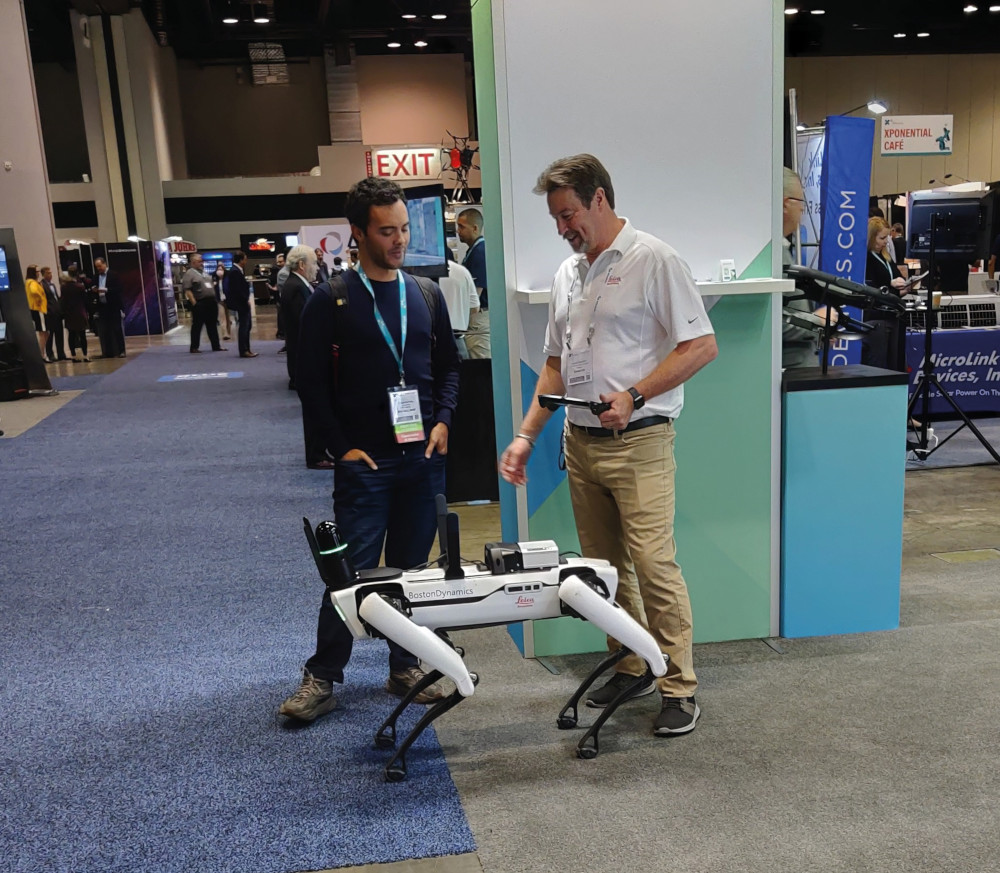

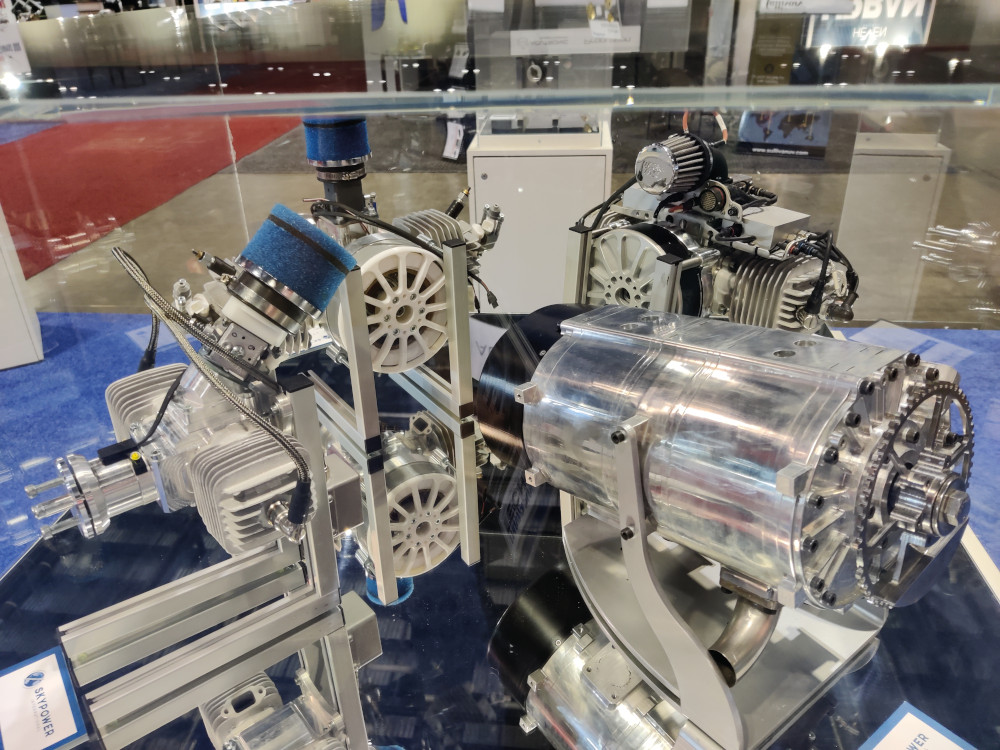
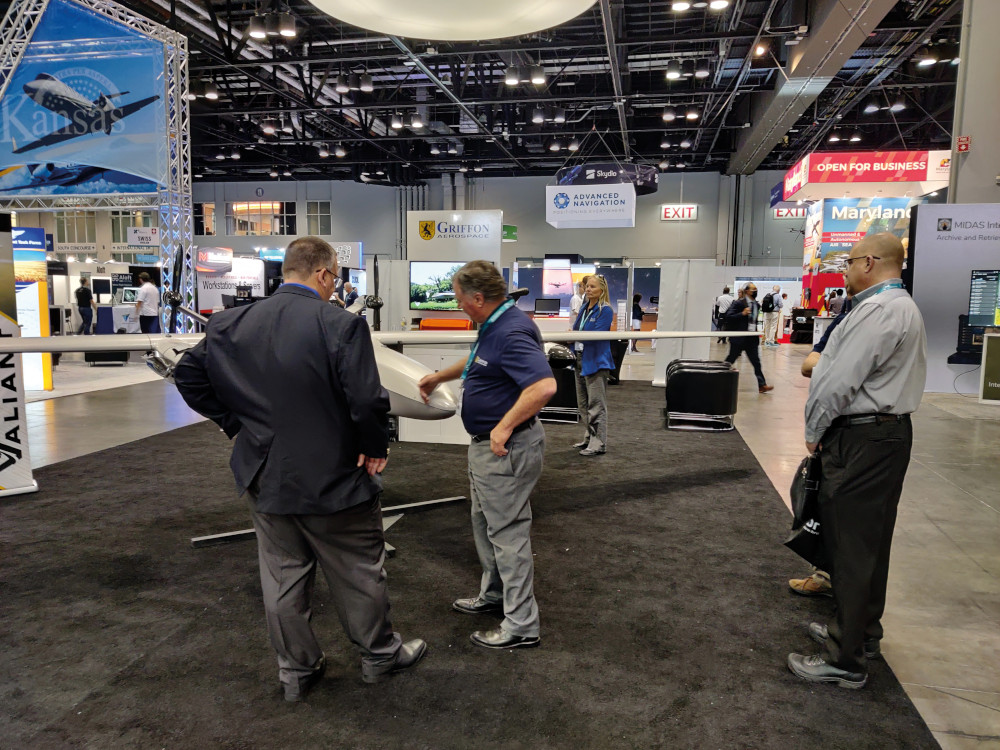
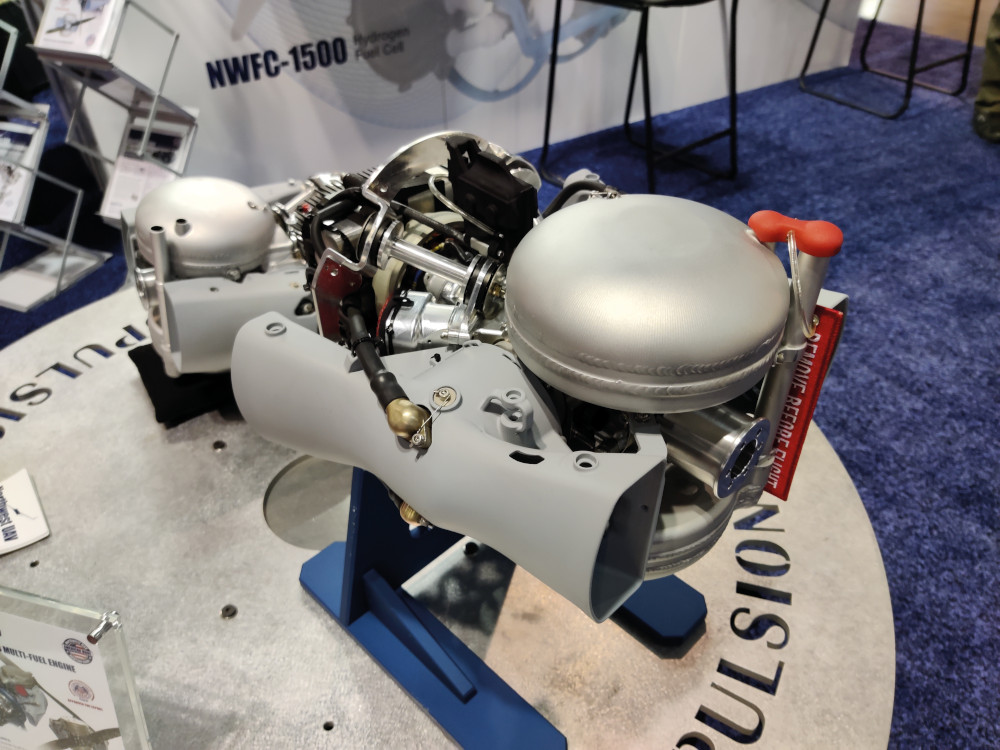
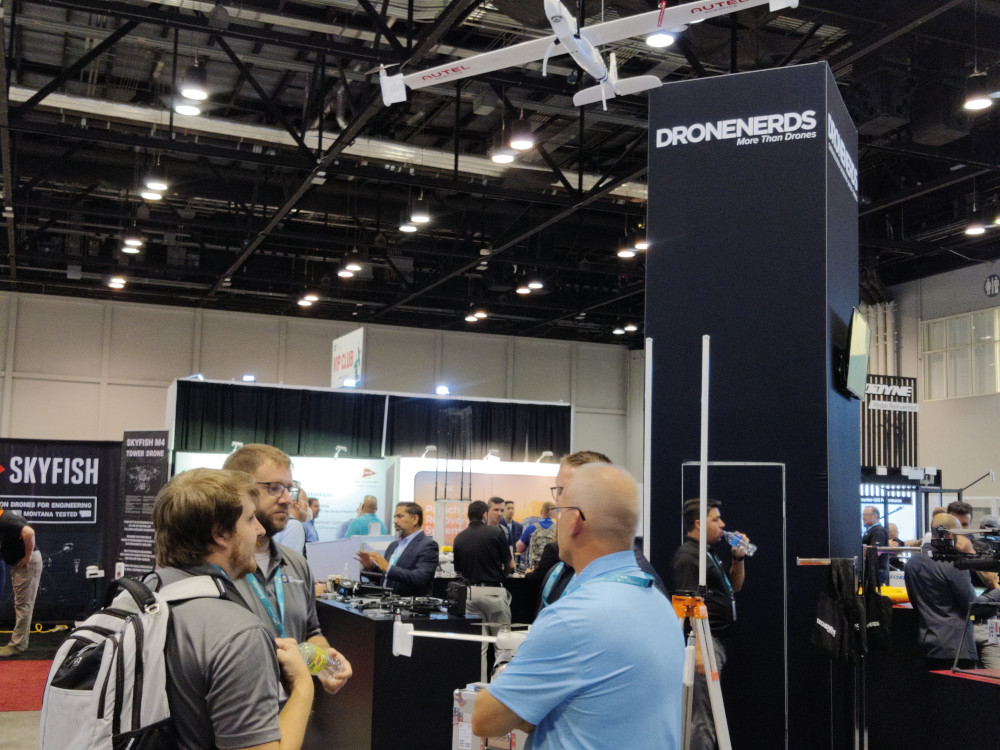
Gold standard
Rory Jackson presents the first part of his review of the latest systems and technology on show at the 50th anniversary of this event…
The Association for Uncrewed Vehicles Systems International (AUVSI) celebrated its 50th anniversary this year by bringing Xponential – the supreme event of the autonomous world – to Orlando from April 25 to 28.
More than 8000 visitors swept through the aisles of the exhibition floor to take in the new uncrewed vehicles and subsystems being unveiled for commercial, civil and defence users. And with more than 500 exhibitors eager to show off the fruits of their labours during the pandemic lockdowns, there was much to see and report on. What follows is the first of a two-part report on the latest products and updates from the trade show floor (with the second part to follow in issue 45).

Intelligent Energy attended the show to unveil its second-generation IESoar 800 W hydrogen fuel cell module, which contains several advances over the original version featured in UST 24 (February/March 2019). These include greater performance, reliability and environmental ruggedness, developed from 5 years of r&d and customer feedback.
“For one thing, it’s easier to integrate into fuselages than the previous version,” said Andy Kelly. “We’ve moved the control electronics into a separate box, and it has a wider environmental range.
“While the first-generation version could only operate in climates from 0 C to 35 C, the second-generation system will be able to function in temperatures from -5 C to +40 C. For a PEM fuel cell, that massively opens up the range of use-cases across geographies, altitudes and applications.”
He added that the environmental improvements were largely developed and trialled first on the company’s IESoar 2.4 kW hydrogen fuel cell before being miniaturised and incorporated into the 800 W architecture.
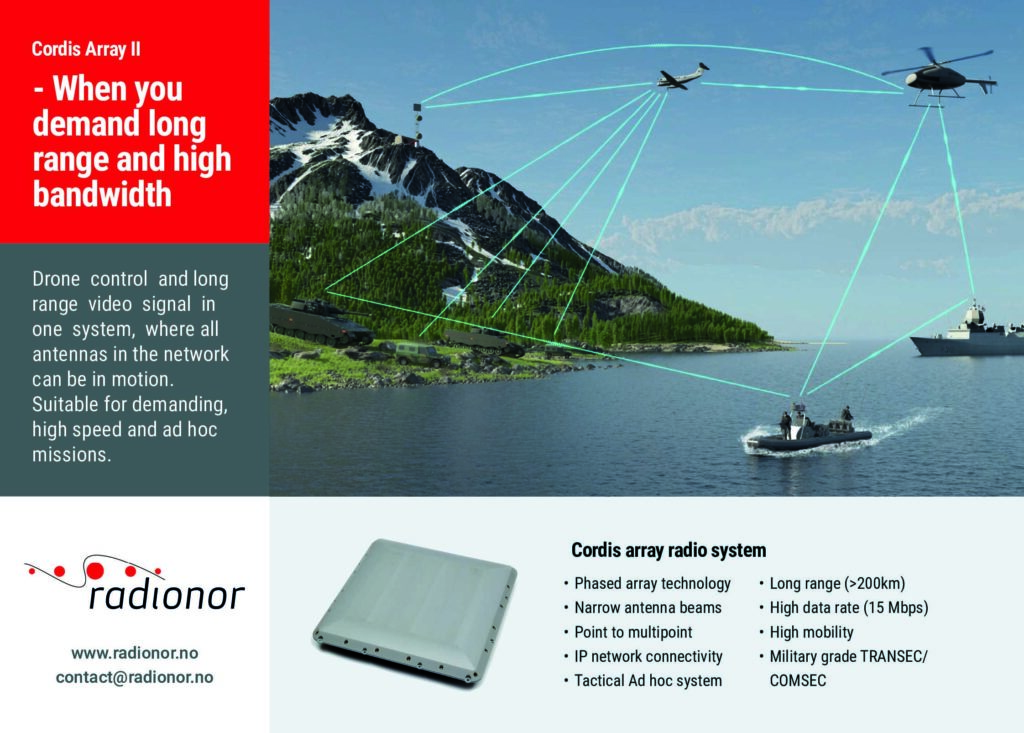
“We’ve made some additional changes inside the fuel cell stack that keeps it running more healthily and efficiently; maintenance requirements have dropped quite a bit too,” Kelly said. “Also, the power electronics have been made more reliable, and the control algorithms have been made easier to interface with.”
The fuel cell is expected to be commercially available later this year.
Hitec has expanded its industrial SG series of programmable actuators with a number of new servo products it says are ideal for the UAV space.
“First we’re debuting our SG10, which is going to have a 10 mm-thick case, as well as our SG20, both of which we expect will be commercially available later this year; our SG15 will be commercially available this summer,” said Shawn Spiker. “As programmable systems, they will be available as CAN, UAV-CAN V0 and DroneCAN.
“DroneCAN is a replacement for UAV-CAN that will have backwards compatibility as it develops. We’re going to be able to continue development of DroneCAN with Ardupilot and its communities to build the new protocol abilities into our servos.”
The company also showcased its new DB778 and DB961 servos, both of which run on brushless e-motors and are designed for high efficiency, power and torque relative to their size. They have hardened steel gears and new cases that are designed to absorb greater loads from the output shafts, which will in turn help the geartrains last longer.
“There’s also a lot of new circuitry in these servos,” Spiker added. “Like everyone else, we’ve been affected by chip shortages, but we took that as an opportunity to find alternative chips that had more memory, so we expanded on that with more programming and improved redesigns of our boards.
“And with DroneCAN, our servos can be programmed and configured through the autopilot, so OEMs and operators don’t have to plug external tools into their servos for configuration or updates.”
Lastly, Hitec’s upcoming NB1200 hightorque actuator is being designed for 132 kg of force, and is anticipated to have the highest torque-to-volume ratio of any of the company’s servos. It is expected to start shipping later this year.
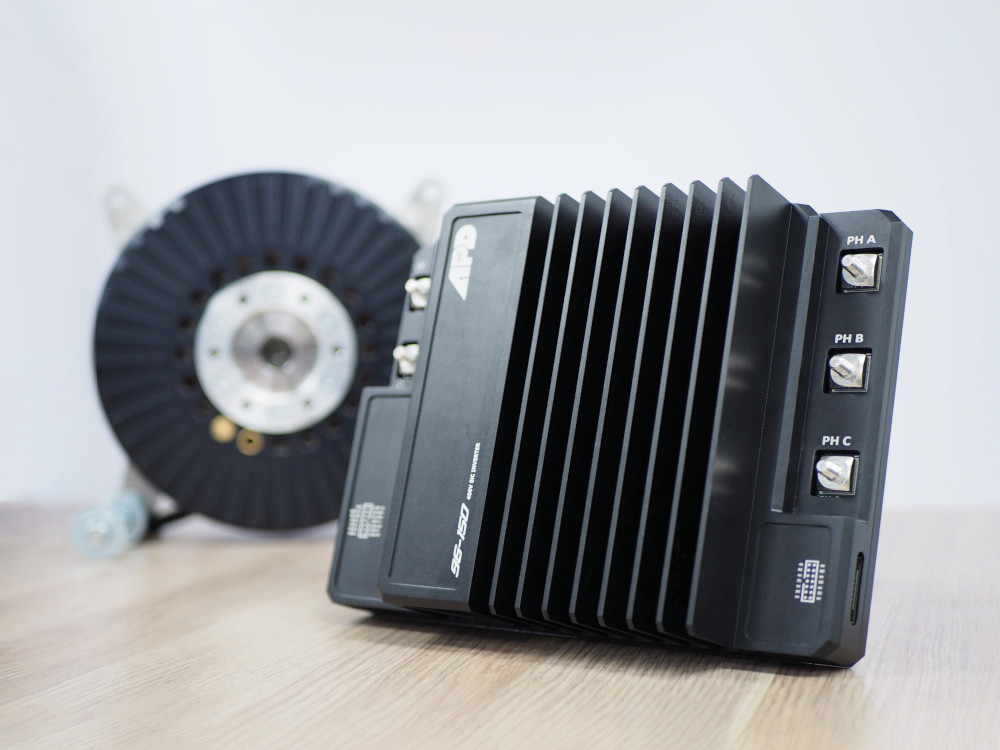
Advanced Power Drives travelled from Australia to unveil a new line of SiC-based motor controllers it said are set to provide new levels of power and efficiency for the motor drives in heavy UAVs and eVTOLs.

“We started developing SiC technology for companies like Aergility, who are producing really massive UAVs, but then we decided to build them as small, really power-dense platforms with all the features for safety and so on that we put into the bigger controllers,” said Vanja Videnovic.
The company’s family of SiC products currently consists of controllers from 10 to 100 kW, and can come with features including sensorless and sensored control, CAN bus and various IP-rating options for their enclosures.
“The power density of SiC gets you massive reductions in weight and heat,” Videnovic added. “The market is definitely going to want long-term supplies of the new inverters, so we’ve secured a USbased supplier for the material.”
Auterion is releasing new updates for its software platform to enable critical functionalities that the company sees as being of paramount importance for the UAV market.
“The focus of the update is the surveying package,” said Laurent Zimmerli. “We extended the software platform, so that platforms like the Astro – the multi-rotor from Freefly, who we’ve partnered with for a long time – can engage in high-precision surveying.
“We’d already integrated the Sony Alpha 7R IV camera for high-resolution pictures, but we’re also starting to integrate a Phase One camera, and we can now do onboard geo-tagging through our Skynode, as well as PPK processing to increase the precision of the geo-tags to that of professional-grade survey results.”
The updates will also include integrations of compatible parachute systems, with the company’s stand featuring a Watts Innovation Prism Sky integrating a parachute pod.
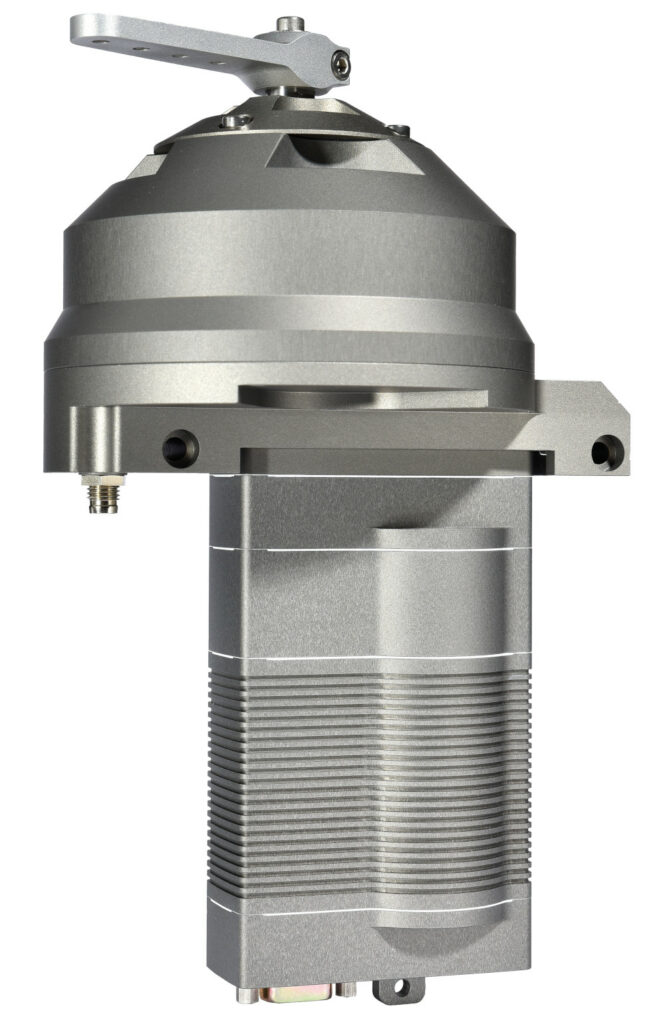
Volz Servos was on hand to discuss its DA 30 HT MCCS actuator, which has recently been updated with the company’s unique magnetic coaxial clutch sensor technology.
“This electromagnetic clutch was developed for optionally piloted vehicles so that the pilot can decouple the output shaft from the servo to take direct control,” explained Phillipp Volz.
“The coaxial shaft features an internal shaft with the position sensor that runs through the output shaft into the servo, so that whether the clutch is powered or not, the servo always knows the position of the output shaft.
“That helps a lot in making the servo more compact, and we’ve also been able to seal it to IP 67 standards. And with customers installing capstans into aircraft, they can integrate this servo without needing to worry about where to mount the external position sensor, or about spending long, painstaking hours to replace it if needed.
“If the clutch is powered, it electromagnetically closes, and it’s spring-loaded so if it’s unpowered, it just opens back up,” Volz added. “And since it’s a toothless clutch, it can’t have a hard failure.
“Also, owing to the way we perform position sensing of the output shaft there’s no position error when connecting. The servo always knows the position of the external output shaft, regardless of whether the clutch is engaged or disengaged.”
This latter innovation also enables the flight control computer to digitally track the position of the servo’s output. The new design eliminates the need for additional external cabling, and reduces the amount of electronics, decreasing the overall MTBF.
The magnetic coaxial clutch system is now available on Volz’s complete range of actuators.
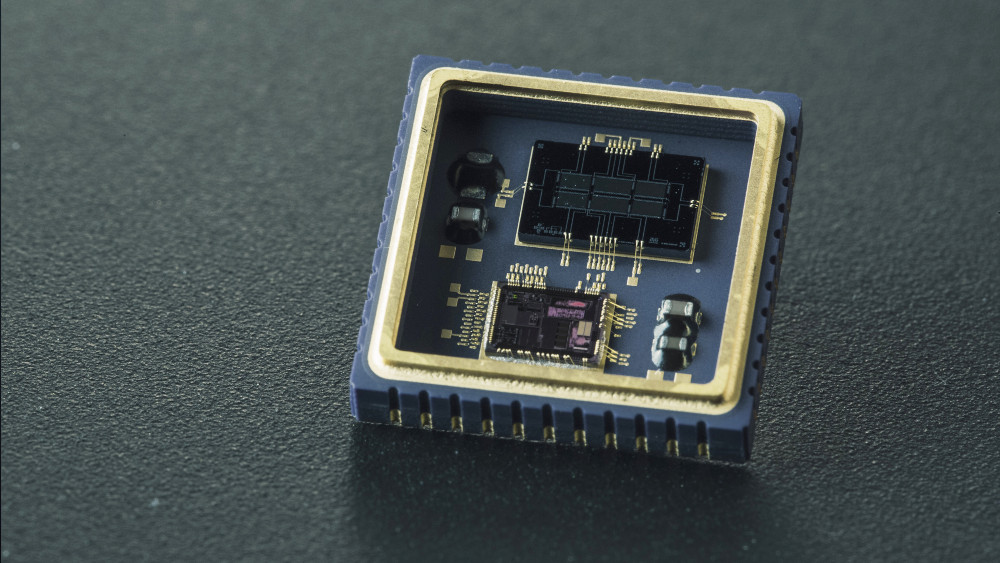
We also caught up with Physical-Logic to learn about some of its latest r&d and hence its plans for its next generations of MEMS accelerometers.
Aviram Feingold told us, “At the moment, many functions of our closedloop accelerometer products are still embedded on the PCB, and we work with our customers to design the PCB for their systems’ interfaces. But we are developing a new range of products in which effectively all the electronics are imported from the PCB into the accelerometers’ ceramic chip packages.
“Some functions will be defined in the ASIC itself, with some on the surface mount devices that we’re moving inside the chip form factor.”
The new products include the MAXLCL- 3030, which has a ±30 g sensing range, and the MAXL-CL-3015 with a ±15 g range. Both accelerometers provide a year of bias repeatability performance within 250 μg, and a year of scale factor repeatability within 250 ppm.
The series will also include the MAXLCL- 3050 with a ±50 g sensing range and the MAXL-CL-3070 with a ±70 g range. Their one-year bias repeatabilities will be accurate to 500 μg, while their one-year scale factor repeatabilities will be within 400 ppm.
“Development is ongoing, and we’ll be in full production of these new accelerometers by Q3 next year,” Feingold added. “We’ve also started r&d for an accelerometer that will have a one year bias repeatability within 100 μg.”
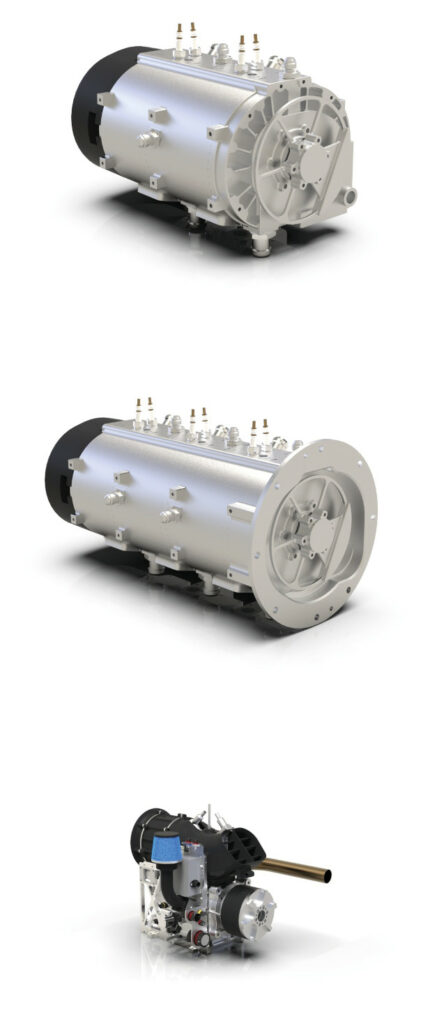
Sky Power showcased the full range of its latest and most advanced engines. Taking centre stage were its newest Wankel hybrid-electric range extenders, the SP-360 DRE and the SP- 540 TRE. These are modular expansions on the SP-180 SRE previously featured in detail in UST 25 (April/May 2019).
“While the SP-180 SRE signifies that this is a single-rotor Wankel displacing 180 ccm, the SP-360 DRE is a dual-rotor 360 ccm system, and the SP-540 TRE is effectively three SP-180 SREs with three rotors and chambers totalling 540 ccm,” said Karsten Schudt. “As well as enabling greater redundancy, users can hugely reduce their battery weight while increasing their flight times by switching to one of these engines.”
The SP-360 DRE outputs up to 51 bhp at 6000 rpm, while the SP-540 TRE produces up to 74 bhp at the same speed. Like their predecessor, the engines can run on gasoline or heavy fuel, and a bigger version is expected in the near future.

Also on display was the SP-55 FI TS, a new two-stroke, single-cylinder range extender with an air-based self-cooling system.
“It’s based around our previous SP-55 FI TS ROS electronically fuel-injected single-cylinder gasoline engine, and can output up to 2 kW of continuous electric power at 48-60 V depending on the customer’s mission and cooling requirements,” Schudt added.
“Usually our two-strokes run on a propeller for self-cooling, so developing self-cooling without that to enable this range extender to be packaged on a hovering UAV or away from any airflow was a major development challenge to overcome.”
The system features a shroud-like construction on top to air-cool the hottest parts of the engine directly, saving weight over a liquid-cooling system.
UAvionix debuted its SkyLine control and non-payload communications (CNPC) network management system, which monitors performance and manages the C2 link systems for BVLOS UAS operations as part of the Vantis network being developed in North Dakota. The system is designed to meet DO-377A standards, which will be fundamental for future BVLOS approvals as envisioned in DO-362A.
“The philosophy behind Vantis is that its permanently installed infrastructure will enable operators to bring their UAVs to the system and start flying safely through standardised requirements,” explained Cyriel Kronenburg. “Using systems such as SkyLine with C-band radios will make it much easier to harmonise the way approvals are being obtained for BVLOS flight through minimum performance standards.
“SkyLine manages a network of ground radios over the cloud, where the system monitors variables such as link quality for each radio, and independently determines which radio is best suited to control any flight in the system. Doing so with a network that is managed centrally prevents a UAV operator from having to establish their own ground radio network to sustain a BVLOS flight.
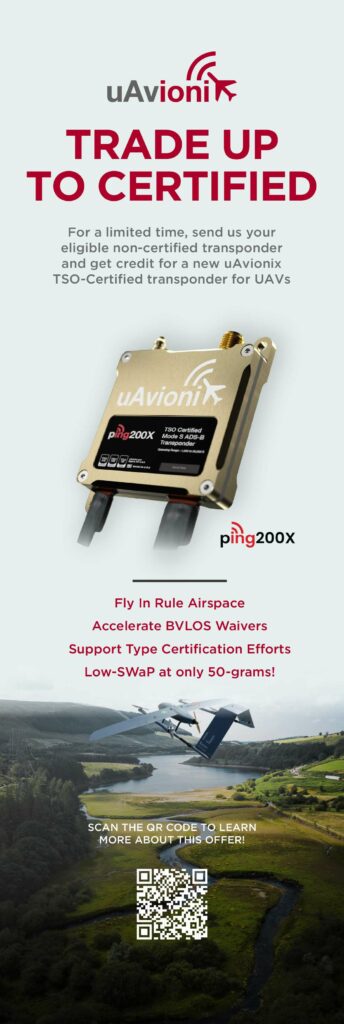
“Through the Vantis network, we’ll provide that CNPC service as a C2 service provider using in essence a frequency assignment manager that will dynamically assign spectrum to users in the safest possible way,” he added.
“We have also started deploying our SkyLink C-band radios, which are designed to DO-362A standards and will be compliant with the upcoming FAA TSO-213a, to enable easy integration into certified airframes and accelerate the certification process for others. The system currently works with both our microLink ISM solutions that have been used in the early test phase and SkyLink C-band.”
Both the SkyLink radios, which operate on a protected spectrum, and the SkyLine network capabilities will play a big role in shifting the focus from recovery of a lost link to the prevention of a lost link, Kronenburg said. This will be essential for sustainable and scalable commercial BVLOS operations.
Video processing solutions company SightLine Applications spoke with us about its new 3.5 software release with critical new capabilities, as well as its plans to expand its line of video processing hardware.
“First we’re adding functionality to our AI Classifier, which classifies detections based on a training model we’ve updated to recognise people and vehicles in addition to different types of UAVs,” said Mark Zanmiller.
“We’re also providing more I/O flexibility so that users can for instance integrate multiple USB cameras, and we have added to the list of the many cameras we’re already compatible with. We’re adding more enhancement functions as well, which will enable more colour to be brought out when operating in foggy conditions.”
The company has also started work on the next product in its line of video processor hardware, called the 17xx. The 17xx-OEM will be designed to provide a low-SWaP, 1080p30 single-channel processor for integrating into compact gimbal designs.
Two concepts were presented at Xponential to solicit feedback from customers. Both hardware concept configurations, the 1720 and the 1750, are based on an ARM-type processor (an NXP i.MX 8M Plus SOM) running Linux, with the same embedded software as SightLine’s other platforms.
This enables existing protocols and interfaces already supported on hardware platforms to be used. Each option is capable of H.265 encoding and MPEG-2 TS/RTP encapsulation.
The 1720-OEM is the smaller concept: it measures 3.8 x 2.8 cm and consumes 3 W. The 1750-OEM measures 4.47 x 3.1 cm and natively supports a wide range of camera inputs.
Whether the initial implementation is the 1720-OEM or 1750-OEM, serial ports, multiple digital video inputs and encoded video output will be included. SightLine added that it values customer feedback and will take on board their helpful suggestions as the 17xx goes from concept into production.
The 17xx is due for commercial release early next year, while the version 3.5 software release should be available now.
UAS Global Services presented its Anzen EG-1250 UAS, a Chinook-style helicopter designed for a range of critical heavy-lifting services. It is powered by a Sky Power SRE-180, and recently finished a series of flights at the high altitude, 8100 sq mile San Luis Valley UAS test area in southern Colorado.
“From those trials, we can judge that the UAS is stable and performing exceptionally well at altitudes of 8700- plus ft [2.65 km] while carrying 25 kg of payload, and generally outperforming our expectations at altitude,” said Anthony Miller.
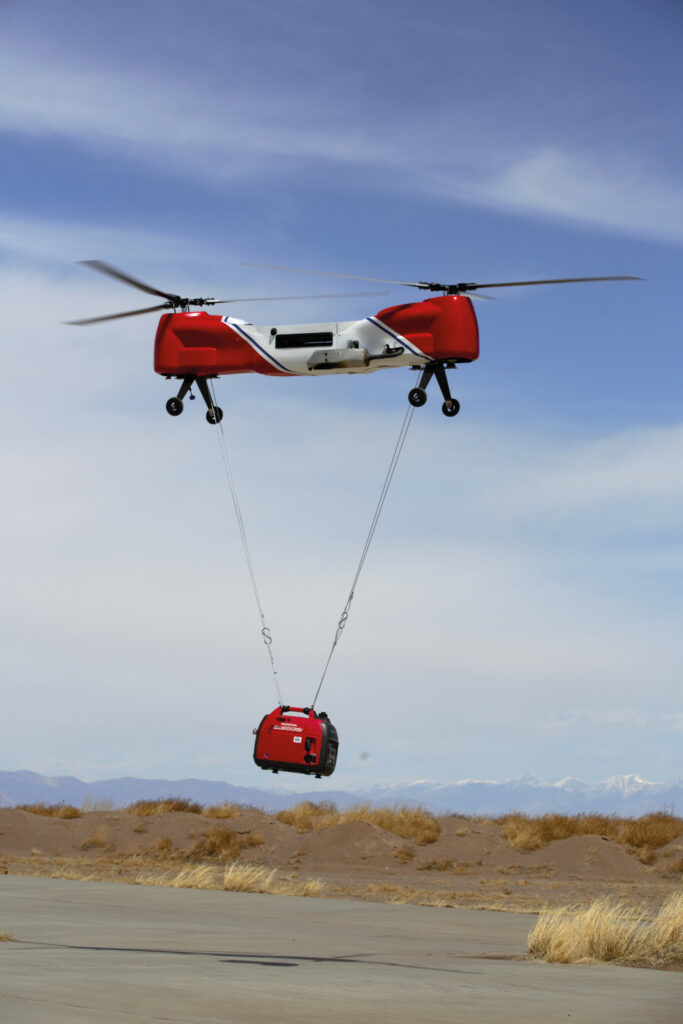
“We haven’t actually found our maximum altitude yet; we spent the 2 years of the Covid pandemic strengthening and re-engineering the EG-1250. Based on the southern Colorado trials we anticipate revising upwards our previous endurance estimates considerably, which now reach 6-plus hours with a moderate payload.
“We’ve had a lot of interest from commercial companies, Coast Guardbased personnel and other emergency services.”
We met with Microlink Devices, which has expanded its client base beyond UAVs into satellites and similar uncrewed spacecraft operating in low- Earth orbit (LEO).
“Our triple-junction III-V cells are very similar in power efficiency to the solar cells traditionally used in satellite PV panels, in that we can achieve 30% solar conversion efficiencies in space,” said Ray Chan. “But what is unique is how lightweight and flexible our cells are compared to conventional cells.
“That means tremendous savings in mass, which the fast-growing LEO satellite and orbital launcher industries are really pushing for right now, in order to lower launch and operating costs in ways that haven’t been possible before, as well as new compact storage and deployment methods.
“There’s also a more general supply shortage of solar panels for the space industry, so expanding from uncrewed aircraft into uncrewed spacecraft will be a major focus for us, alongside our existing work for HALE UAV projects like those of Boeing and Airbus.”
The FAA is working on issuing Sagetech Avionics a TSO authorisation for its MXS civil transponders. TSO certification of this critical avionics component will help simplify and accelerate uncrewed aircraft developers’ type certifications in nonmilitary operations.
“We’re receiving a TSO authorisation for our Mode S transponder, with ADS-B In and Out and integrated barometric altitude encoding,” said Tom Furey. “Last year we achieved military certification, which enabled all the same functions for defence UAVs with the addition of the military-specific Modes 1 and 2, as well as encrypted Mode 5, better known as IFF.”
Using TSO-approved avionics components streamlines the type certification for aircraft compared to non-approved parts, which require an arduous review process.
Sagetech’s transponders will subsequently be usable on certified UAVs in effectively any application. It also means the company’s MXS and MX12B transponders, which share a common platform, will be swappable for multi-role UAS users or manufacturers wanting to cover both civil and military missions.

“Our certified system will achieve big improvements over uncertified ADS-B receivers in distinguishing between multiple aircraft, even when several are transmitting ADS-B data in congested airspace,” Furey added.
“We’ve tested our MXS transponder against a few COTS transponders and ADS-B receivers, and the latter detect only around 40% of the traffic we’re seeing. That’s a major safety-critical improvement, and this will be the first time a really small transponder with ADS-B In/Out in the same box has been certified by the FAA, and will be the only small certified ADS-B receiver on the market.” The TSO is expected to be issued very soon.
Looking to the future, the company is also working to introduce a detect and avoid (DAA) solution to host ACAS (airborne collision avoidance systems) logic algorithms to enable the necessary onboard intelligence for UAVs to safely conduct BVLOS operations in potentially congested airspaces. The Sagetech DAA computer for ACAS will readily integrate with the MXS.
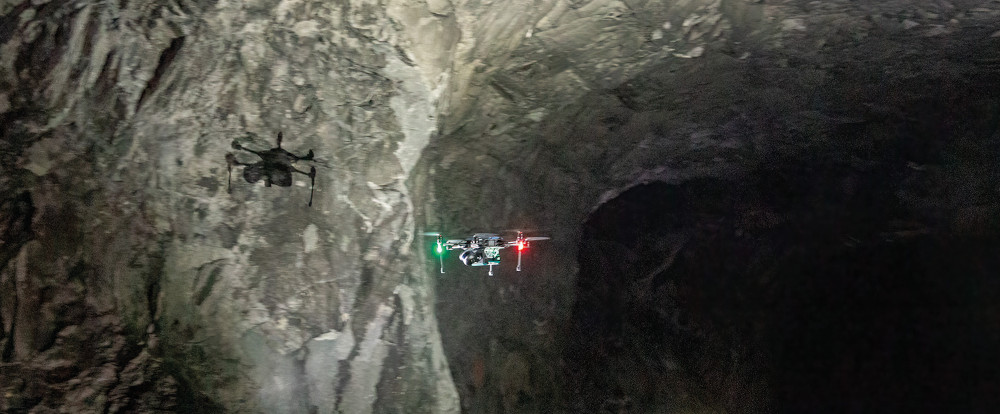
Easy Aerial showcased its many solutions for aerial survey, ground control and tethered power systems, and highlighted a particularly novel solution for mine exploration applications.
“We’ve made a compact hexacopter carrying Exyn’s proprietary Lidar-based payload, which rapidly rotates 360º in the roll axis, and its point cloud data is processed in Exyn’s SLAM software to project a safe, obstruction-free path in front of the UAS through closed environments,” said Ivan Stamatovski.
“Exyn approached us for a version of the hexacopter made in the US, and we took that opportunity to add more thrust capability, a different battery setup and some other improvements. They’ve just successfully test-flown it fully autonomously through a 1 km-long mine tunnel.”
The UAV – called the Hexyn at the time of writing – can hence fully map underground and open-pit mines, including unstable areas where miners might be trapped and in need of rescue, before returning intelligently to its launch point.
Easy Aerial is now proceeding with plans to manufacture more than 100 units for Exyn, while simultaneously continuing to develop the system with new components for longer missions and higher thrust.
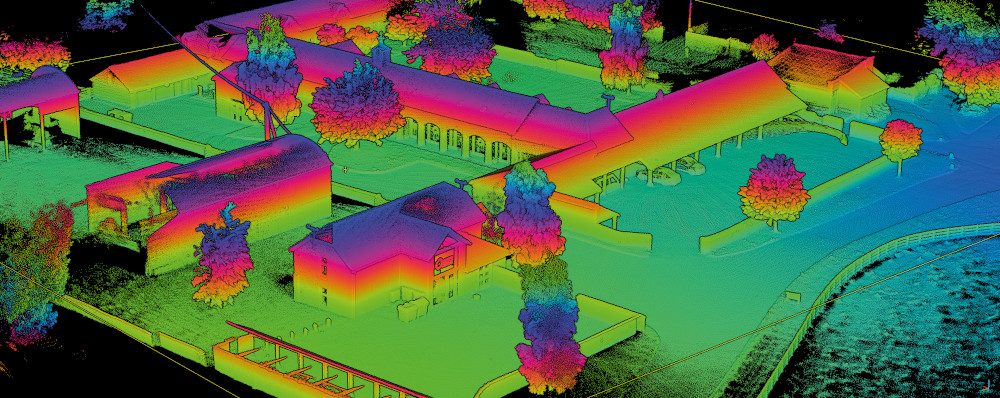
OxTS was on hand to discuss its xNAV650, one of its newer INSs for survey and mapping applications. It is a MEMS-based system weighing 130 g, measuring 77 x 63 x 24 mm, and consuming 4 W working on power inputs of 5-30 V, with 8 g of accelerometer measurement range and a 480º/second range on its gyroscopes.
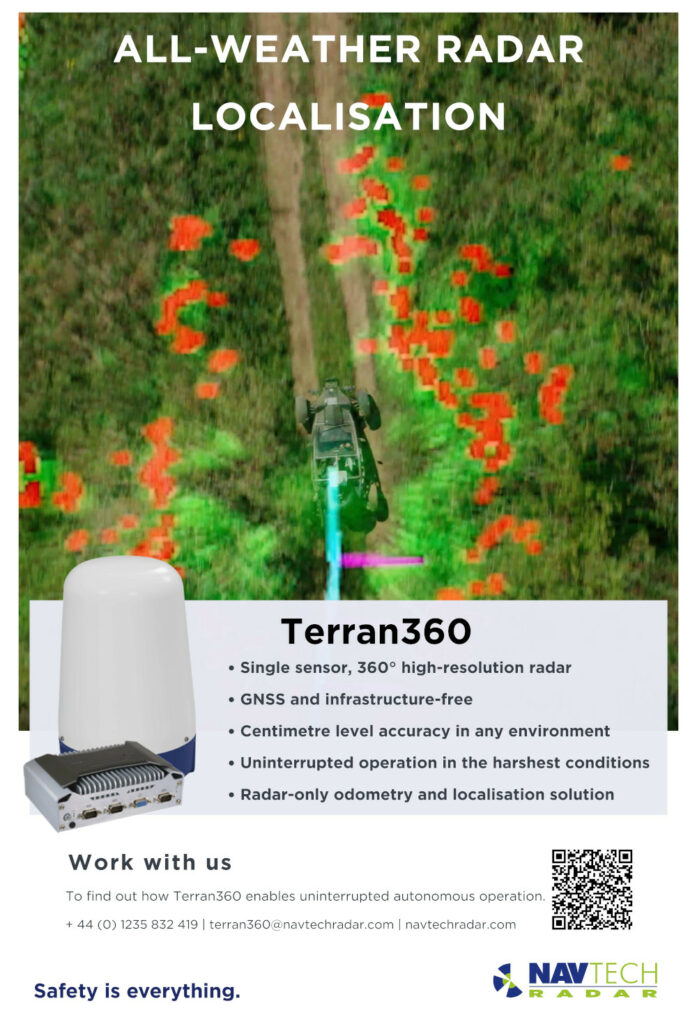
“It also provides major benefits for survey and mapping professionals when coupled with OxTS’ Lidar geo-referencing software, OxTS Georeferencer,” said Geoff Besbrode. “The software takes the inertial measurements from the xNAV650 and combines them with raw Lidar data from Velodyne, Hesai, Ouster and Livox sensors, among others. Once combined, the data can be used to create highly accurate 3D point clouds.
“The xNAV650 outputs 2 cm positioning accuracy, with improved performance after post-processing, and 1-2º for heading, pitch and roll. It is this accuracy that enables us to create the high-quality point clouds you can see on our website.”
OxTS Georeferencer also includes a boresight calibration option. Boresight calibration can be a real headache for people integrating Lidar data with INS measurements, because without really precise calibration of both systems’ coordinate frames – which is almost impossible to achieve by eye – the final results will be subject to blurring, double vision and other problems.
“Our boresight calibration software can achieve calibration to a tenth of a degree by using data gathered during a quick calibration exercise that involves surveying some special reflective targets,” Besbrode added. “That means there is effectively no chance of any of those problems afterwards.”
Omnetics was displaying its extensive range of connector options, with a particular highlight on its nano-miniature solutions, which have been designed to enable as much performance and robustness as possible in as minimised a form factor as the company’s designers could produce.
“We very much tried to take the attributes of existing connector types such as 38999 circular connectors and D-Subs, and integrate them into a connector form factor one-quarter of the size without jeopardising any of the ruggedness,” said Derek Hunt. “We have given designers the ability to use the larger traditional contact types to serve as power lines, while running smaller contact types – 26/30 AWG – in parallel for signal or high-speed digital transmission within some of our hybrid offerings.
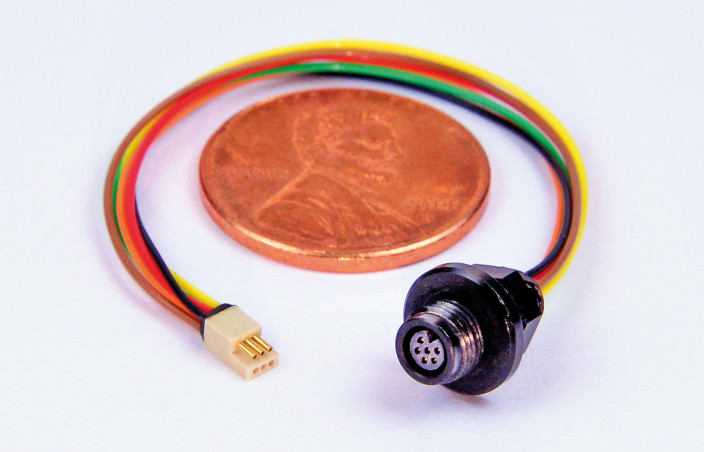
“We’ve done the same with our range of Nano-D rectangular connectors. Innovations like altering our standard shell types to carry 3 A per contact instead of 1 A within a similar form factor have been key to us allowing designers to remove unnecessary size and weight from their interconnection systems.”
Omnetics’ Nano 360 Circular connectors are available in plastic or metal housings, and both its Nano circular and rectangular lines are offered with a range of latching and mounting configurations, as well as meeting Mil- DTL-3213 standardisation.
Although it had been officially unveiled at Oceanology International 2022 just a month beforehand, the new Hugin Edge AUV from Kongsberg Maritime was also being promoted at AUVSI Xponential.
“The Hugin Edge has been in development for a year or so, and it’ll probably be another year or so until it’s available for delivery,” said Arnt-Helge Olsen. “It’s designed to be optimised for shallow waters, down to 1000 m maximum depths.
“Our various other platforms were certainly capable of that, but being able to dive down to 3000, 4500 and 6000 m, they were far in excess of the prices and running costs that many new users in
littoral operations could afford. And there are plenty of new micro-AUVs optimised for 100-300 m, so 1000 m seemed a sensible target to engineer for.”
The Hugin Edge is capable of 24 hours of operation between battery charges, as well as autonomous deployment and retrieval using the LARS previously discussed by Bjorn Gjelstad in UST 32 (June/July 2020) and a special latching system designed on the front, near the nose.
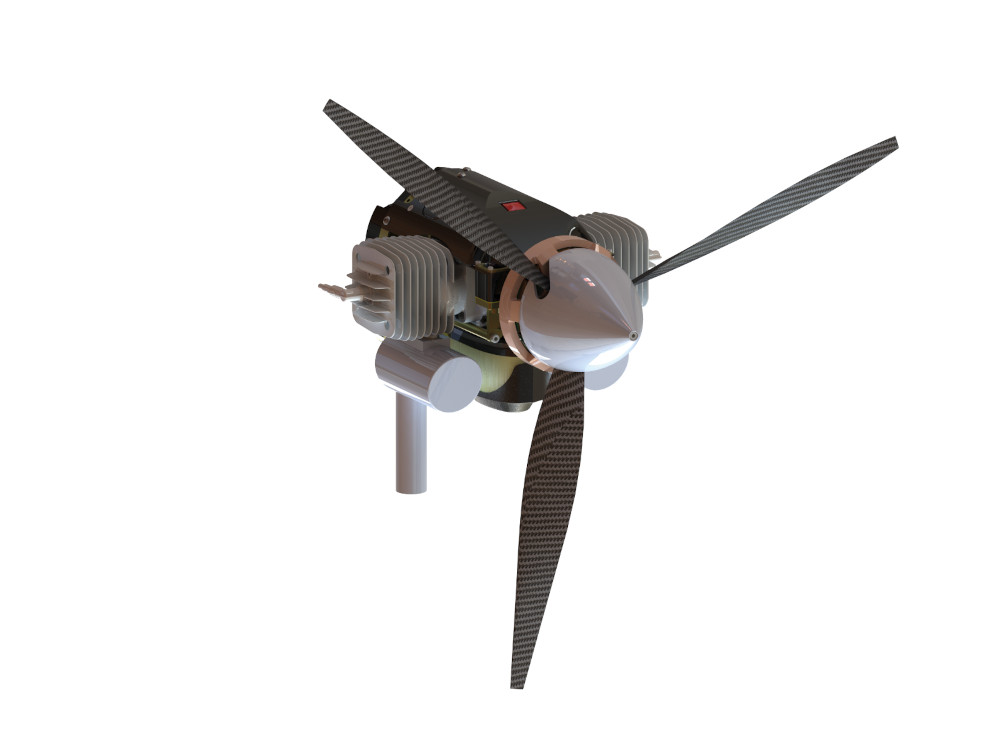
In UST 39 (August/September 2021) we featured HFE International’s innovative GenPod concept, which uses a turnkey assembly of powertrain components to create a propulsion solution that could be clipped on and off a UAV nose for rapid maintenance turnarounds.
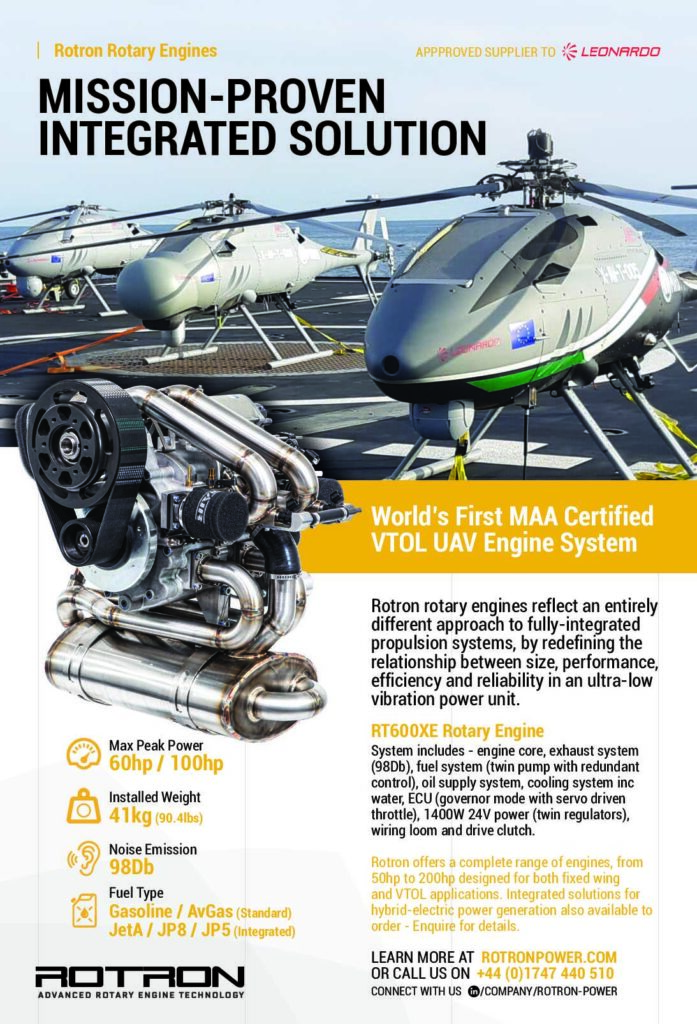
At the time, the launch version of the system was the GenPod 70, so named for being built around a 70 cc two-stroke boxer from Desert Aircraft. Since then, HFE has proven the concept and its capabilities, and developed numerous larger versions built around larger DA engine cores, with the GenPod 215 being the largest version yet.
“We’re building the first prototypes this summer, and production should follow by early 2023,” said Tom West. “The smaller GenPods are perfect matches for any UAV below 50-55 lb, while the GenPod 150 is great for 150 lb aircraft. The 215 cc GenPod could power aircraft weighing up to 175 lb, depending on aerodynamics of course.”
The GenPod 215 will weigh about 5.6 kg with all ancillaries, harnesses and fuel lines included, and output 11.1 kW maximum continuous power at a crank speed of 7000 rpm.
With customisation and interoperability being key values among autonomous vehicle manufacturers and operators, VectorNav has made its Tactical Series of navigation systems compatible with a number of FOGs and GNSSs from some notable solutions providers.
“With this new capability, our Tactical Series GNSS-aided INS products can plug in external inertial or GPS/GNSS systems, if an end-user wants to take advantage of particular performance capabilities of either technology,” said Jeremy Davis.
“That could be vital if, say, FOG-grade data is needed to compensate for when GNSS is lost or jammed, or if a military user needs to switch to something with a special protocol or standard that’s exclusive to defence use.
“Our r&d team is also working on several fallback modes, both automatic and customer-specified, to be able to switch between navigation data sources for redundancy purposes if needed.”
At the time of writing, compatible solutions included the FOGs from Emcore, KVH and Northrop Grumman LITEF, as well as BAE Systems’ M-Code GPS receivers.
“About a quarter of the work was programming for smooth data comms,” Davis added. “The rest went into retuning and testing our filters to make sure they used the added systems’ data as effectively and intelligently as possible.”
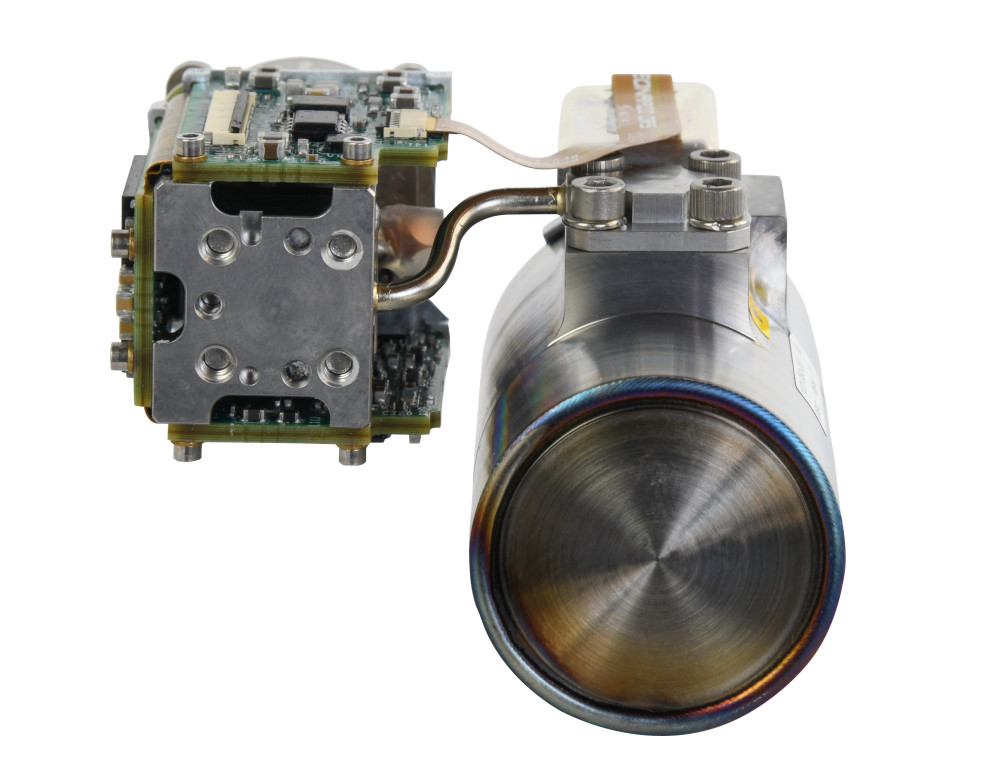
Sierra-Olympic Technologies recently debuted two new high-definition thermal cameras it says are ideal for UAV integrations and missions. The first is the LWIR Viento 1280, so named for its image resolution of 1280 x 1024 – notably higher than the industry-standard 640 x 480.

“With a 10 micron pixel pitch the Viento 1280 breaks new ground in uncooled HD thermal imaging technology,” said Jeff Leake. “All the industry’s other uncooled LWIR focal plane arrays are either 17 or 12 microns.
“Along with meeting the design and manufacturing challenges of thermal management and device fabrication, the 10 micron pixel pitch is comparable to the 8-14 micron optical passband of a typical infrared camera.”
While this 10 micron pixel pitch is difficult to achieve physically, the user gets four times the pixels of standard VGA-resolution IR cameras, meaning much wider fields of view and finer detail when optically zooming.
That enables a level of detail that is ideal for computer vision, machine learning and a range of AI capabilities in thermal monitoring and inspection missions. Examples include object detection, classification and tracking based on thermal signatures rather than colour imagery, offering the ability to carry out such missions at night and in foggy or rainy weather.
The Viento 1280 is now commercially available with 25 and 35 mm lenses that weigh 163 g and 220 g respectively. Continuous optical zoom lens options will be available soon.
Sierra-Olympic also unveiled the HexaBlu, a high-definition, high operating temperature MWIR sensor array from DRS EOIS. The HexaBlu features 1280 x 960 resolution, with a focal plane array that has a 6 micron pixel pitch, which is also close to the 3-5 micron MWIR waveband in which the camera operates.
“Standard InSb detectors are cooled to 77 K, whereas this system works at about 150 K, meaning the cooler is much smaller, lighter and lowerpowered than on standard MWIRs,” Leake said. “That makes for easier integration into UAV gimbals, and longer flight times too.”
The HexaBlu cooler has undergone run-life testing under stressful loading conditions, with samples still operating after 27,000 hours.
Both the Viento 1280 and the HexaBlu are designed for continuous monitoring and security missions, as well as various aerial integrations and applications.
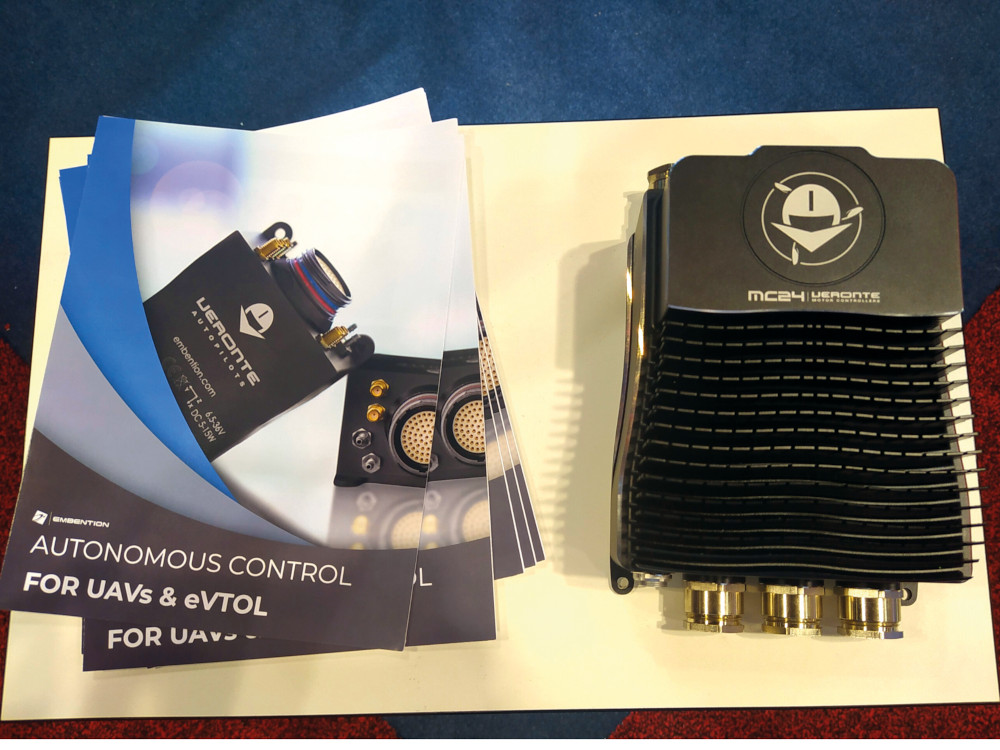
While primarily an autopilot maker, Embention exhibited several avionics products that provide other essential functions in UAV subsystems, all of which have been developed according to DO-178 and DO-254 aviation certification guidelines.
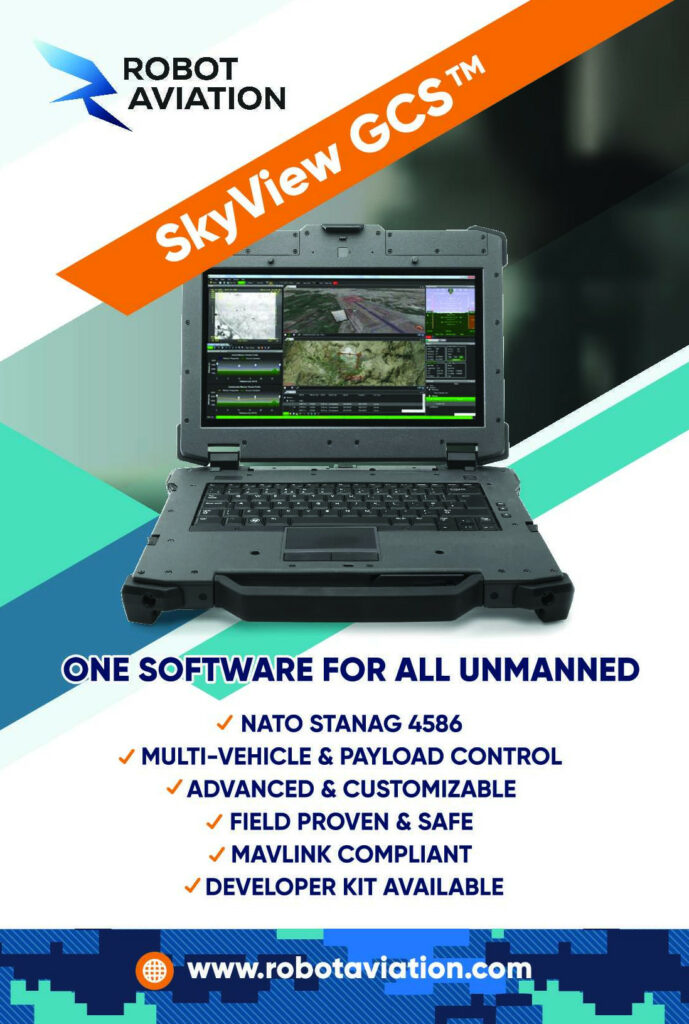
“Together with our latest autopilot, we’ve brought our new series of motor controllers for eVTOL applications, our smart CAN isolator, our CAN expander [CEX] and our Veronte tracker ground antenna,” said Javier Espuch.
Two motor controllers have been developed. The MC24 is designed for 24 kW, with up to 200 A continuous current on up to 120 V, while the MC110 works on a 550 V supply while delivering 200 A.
“We’ve been watching the developments of eVTOL aircraft, and they will need systems that are both certified and will run at very high voltages,” Espuch noted.
“The CEX meanwhile provides expansion ports to the Veronte autopilot. It connects the autopilot to a redundant CAN bus, and also interfaces via UART, PWM, analogue inputs and so on to extend the I/Os of the autopilot. It also allows integrators to replace lengthy PWM links – which are very vulnerable to EMI – with more secure CAN links.”
The smart CAN isolator features a CAN input and output, with an isolation system inside to cut off a faulty portion of a vehicle’s CAN bus from the rest of the network. It therefore prevents such faulty devices from triggering so-called babbling idiot failures, which could generate unscheduled data traffic and hence slowdowns or blockages in the system.
Advanced Navigation spoke with us about its new cloud ground control (CGC) solution, an online platform designed to enable monitoring and control of any autonomous or uncrewed vehicle over the internet.
“We partnered with Surf Life Saving Queensland, which has hundreds of UAVs for coastline monitoring – for sharks, people drowning and so on – and they used CGC as their command and control portal,” explained Romain Pare.
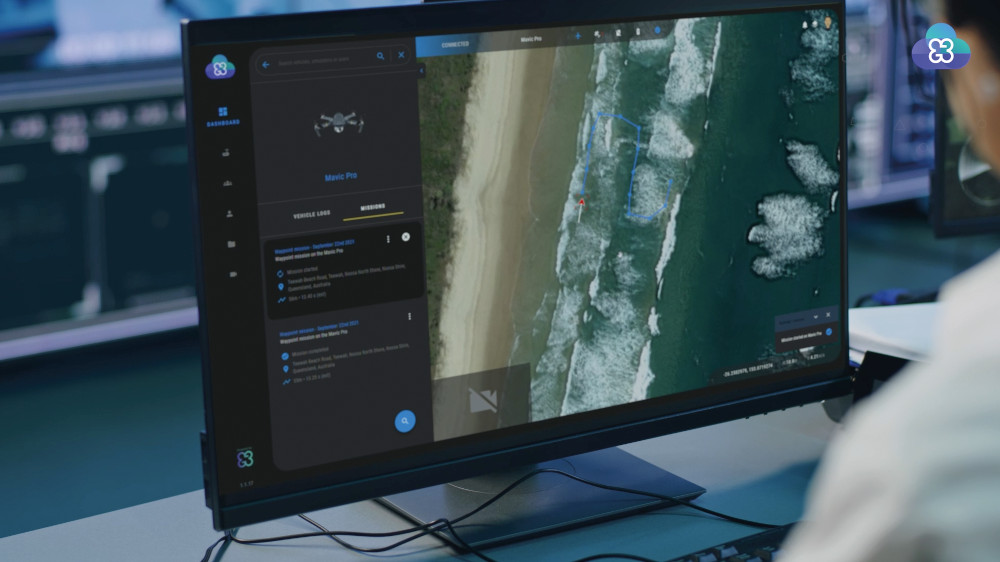
“Using this platform, they could access any accessory on any of their UAVs – camera gimbal controls, live video feeds, buoy launchers and even command BVLOS flight waypoints, technically, once that becomes legal of course.”
In the future, Advanced Navigation also plans to use its 4G micro-modem technology as a dongle that effectively can be plugged into any autonomous vehicle to connect its flight control systems to the CGC’s cloud over 4/5G or any future cellular links.
“The platform is cloud-agnostic, and the micro-modem is being developed inhouse,” Pare added. “At the moment, CGC is accessible through either a web browser or an Android application, but an Apple version is being released soon.”
UPCOMING EVENTS























